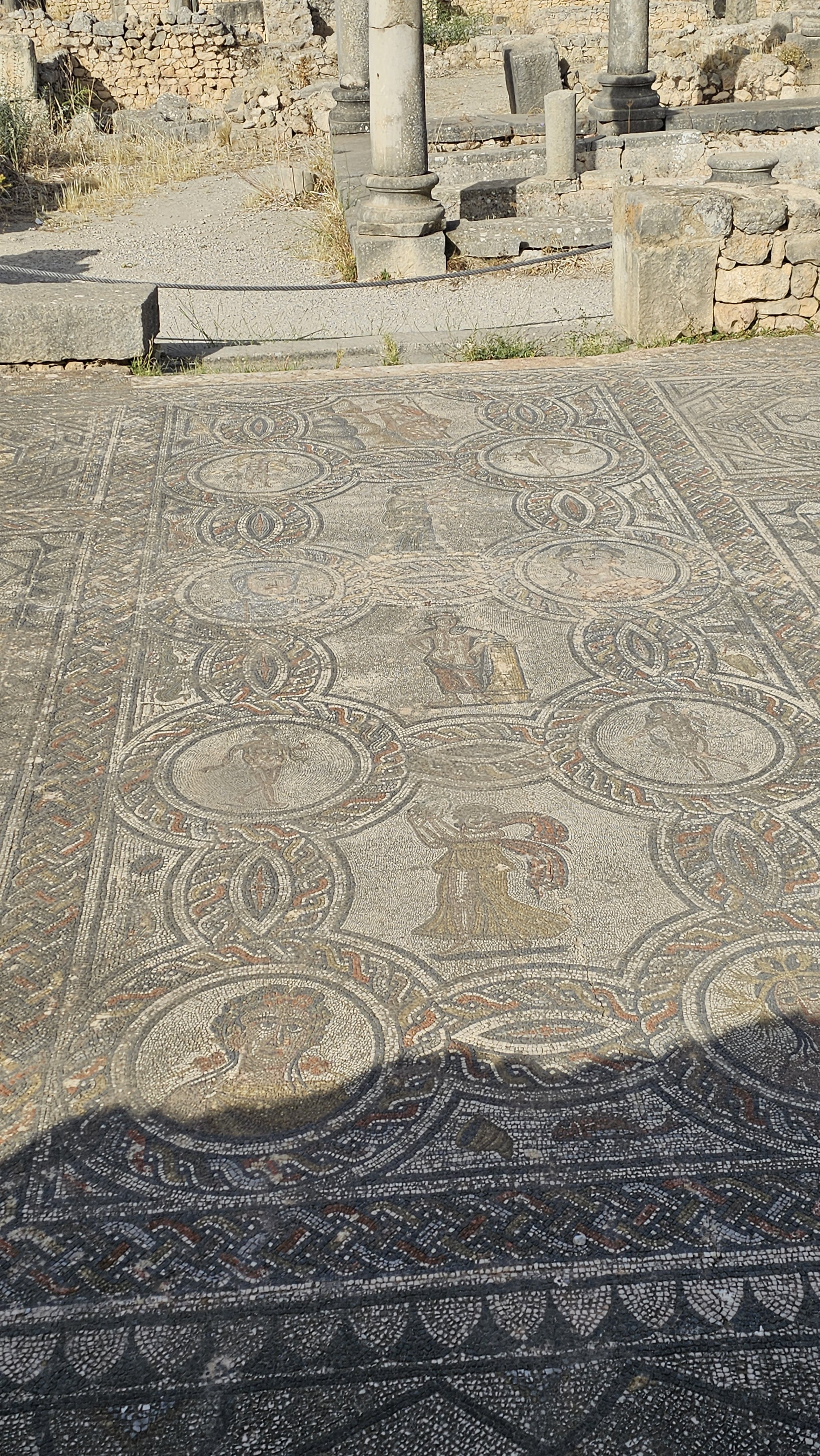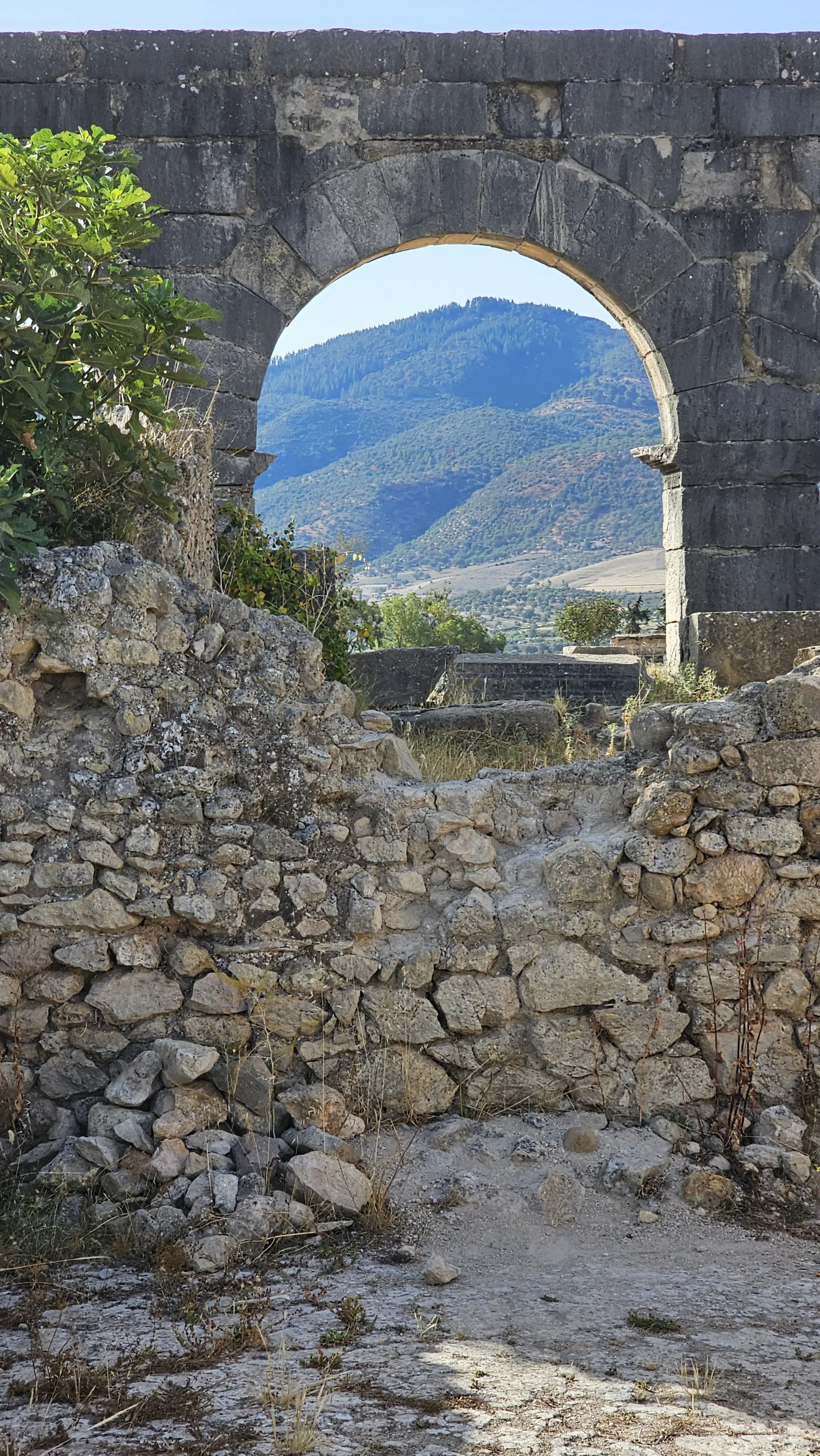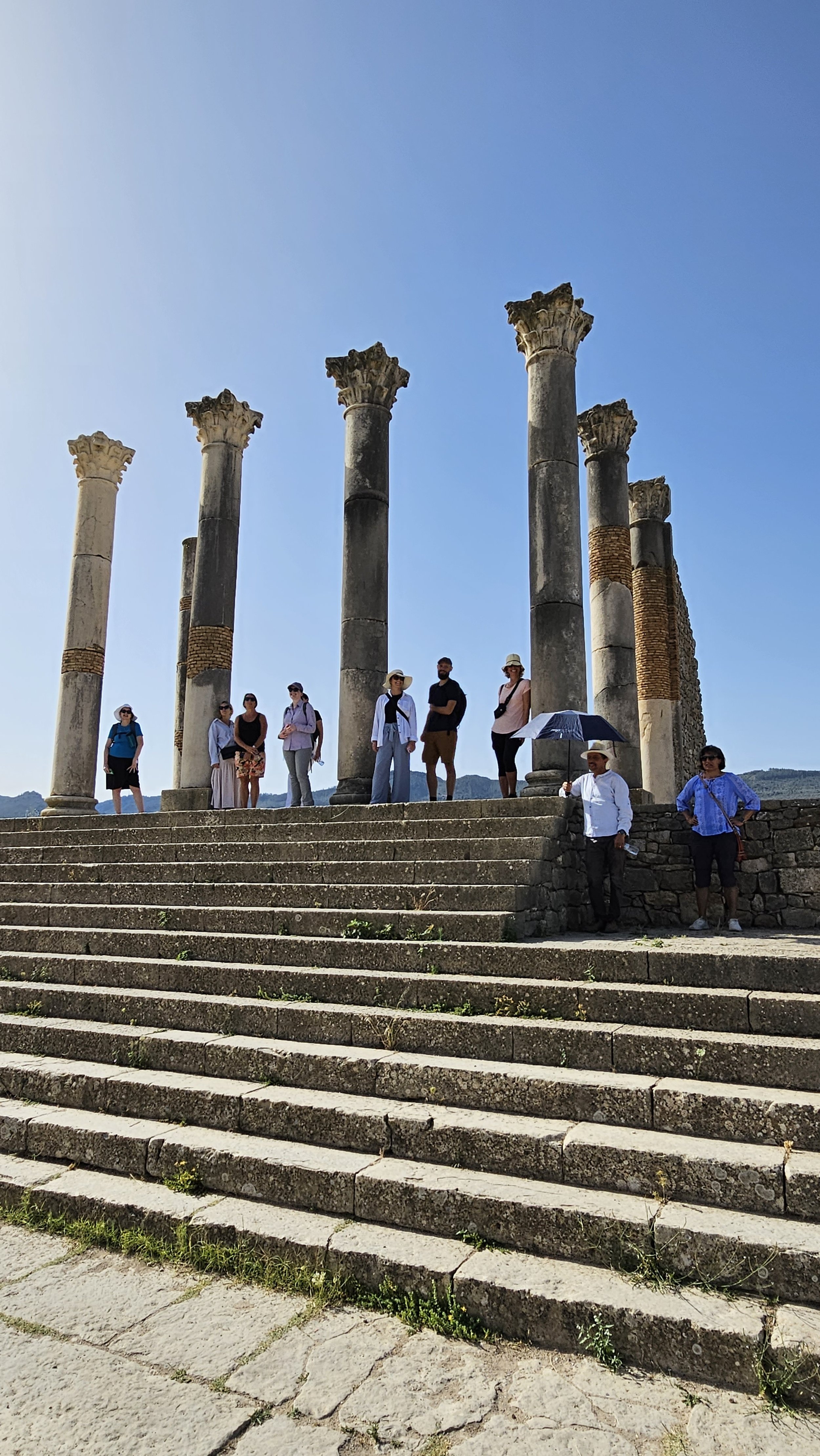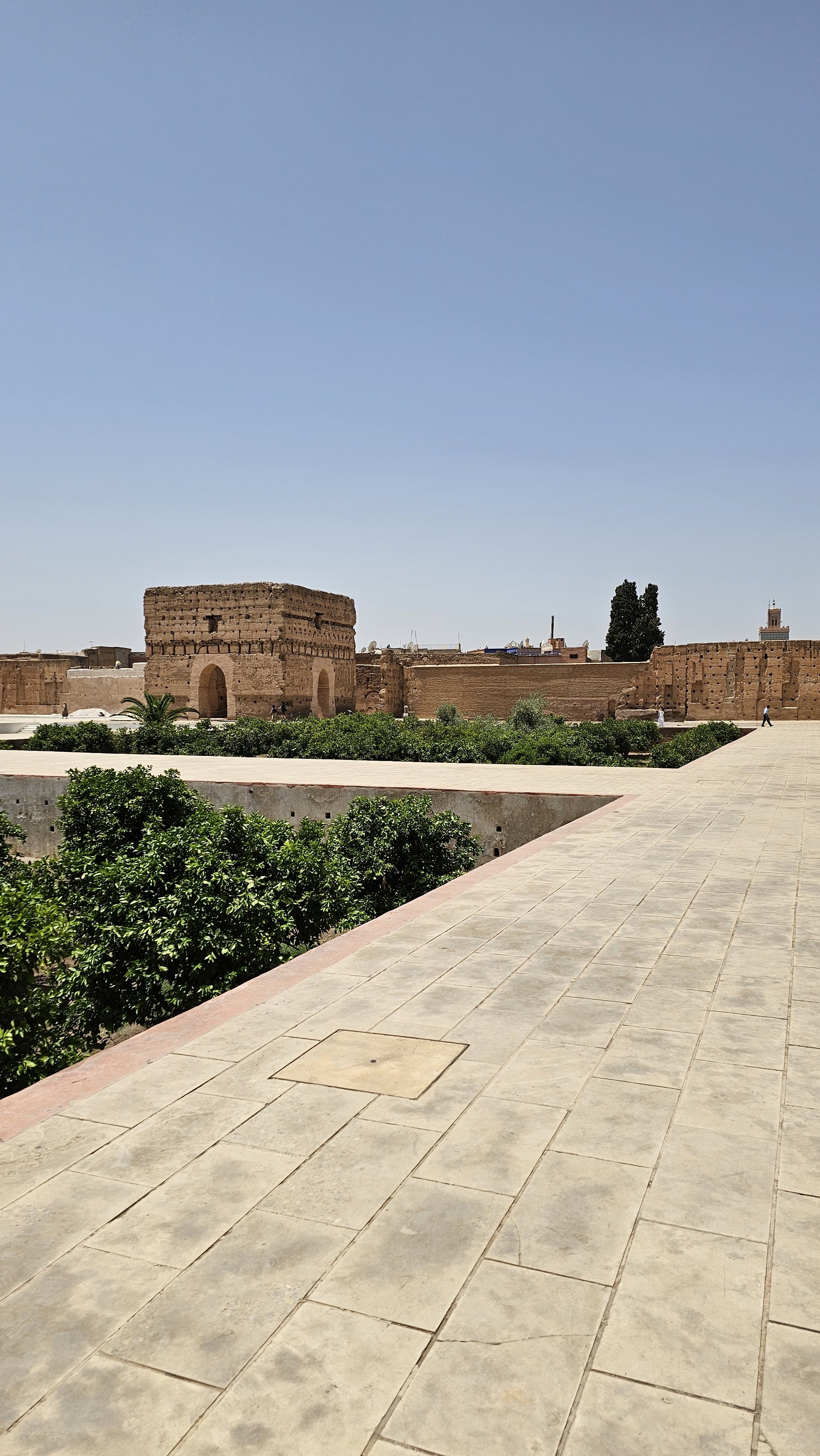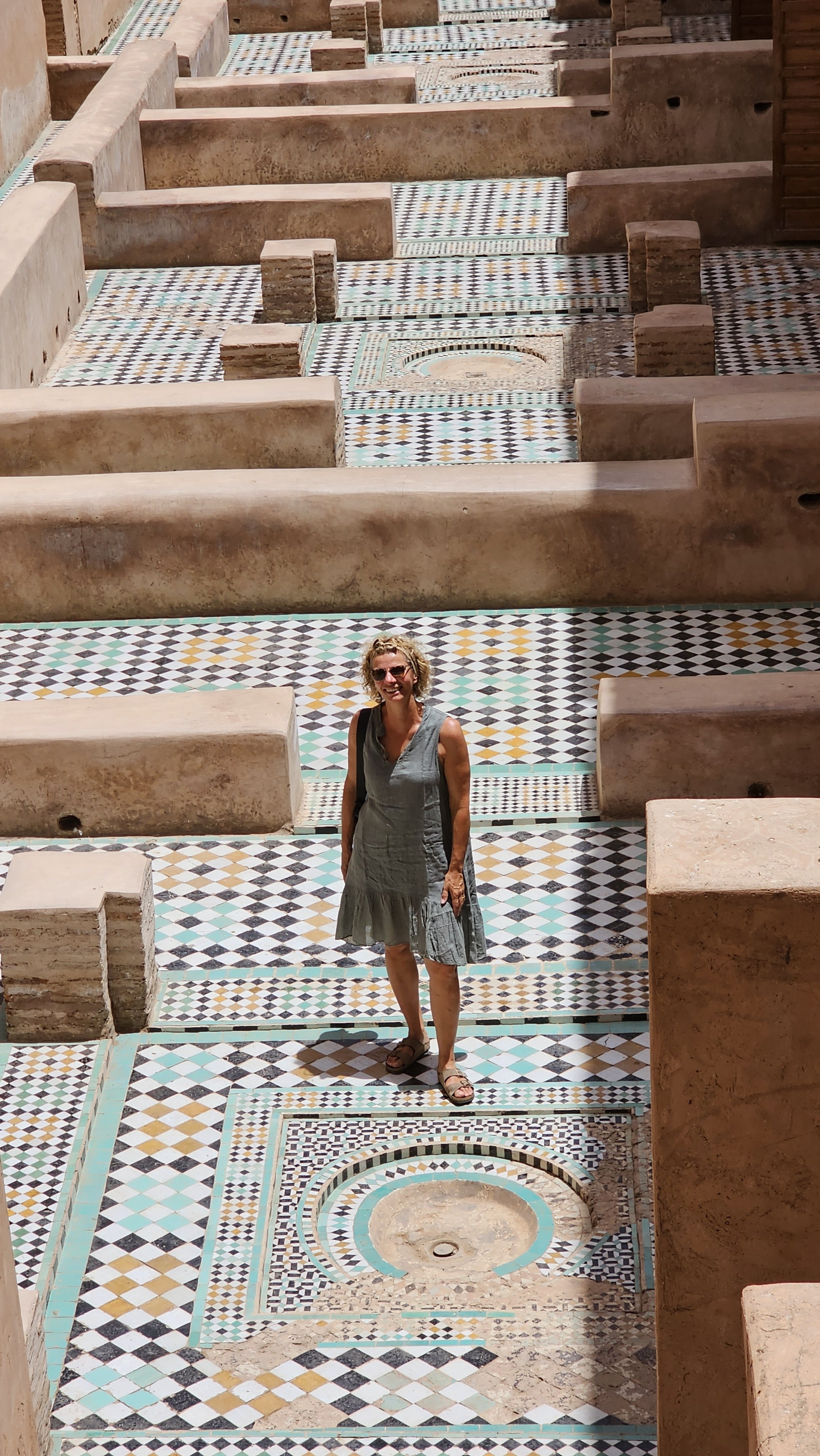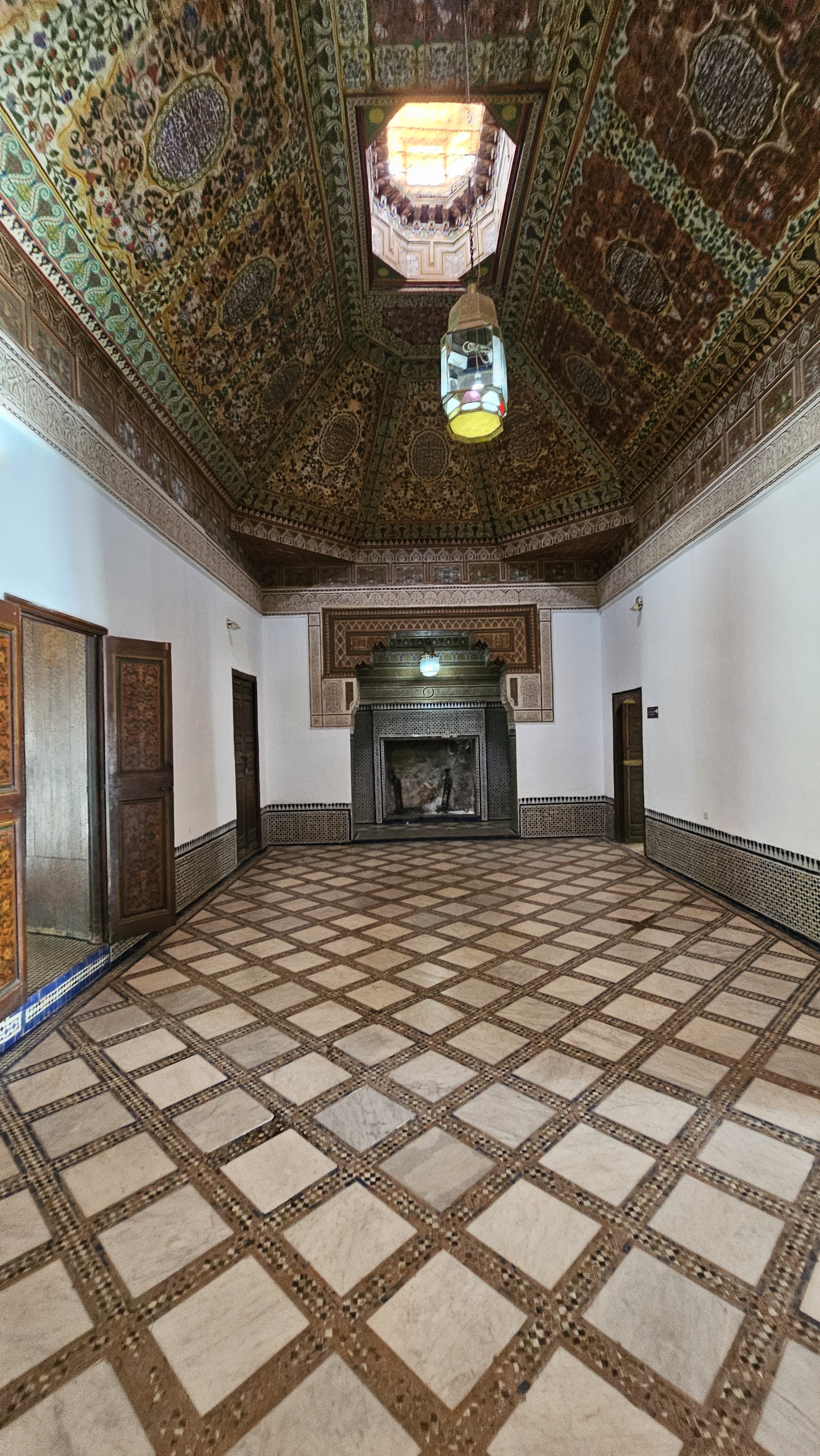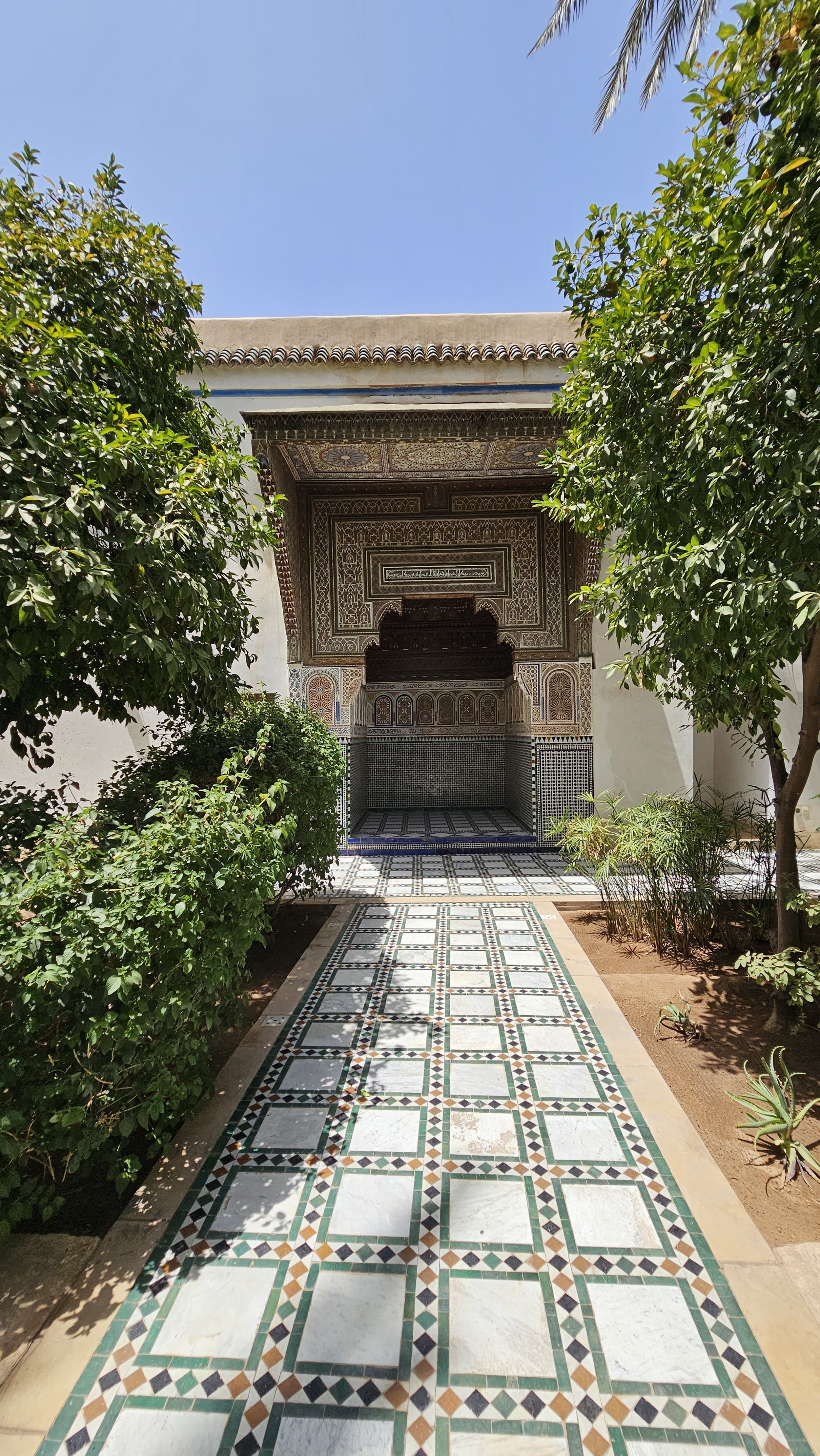Morocco - part 1
After luxuries, clean, beautiful, colourful, mixed and proud Andalusia we took a plane from Malaga and landed in Casablanca, Morocco!
As we were running through Malaga airport Nebojsa’s legs walked straight into my favourite Spanish shop Desigual! He is a great husband!
I got a new beautiful and colorful leather backpack, but I am told I have to get rid of my existing Desigual backpack bought in New York and I can’t do it! It is worn out but I simply love both tooooo much and they are precious memories from different trips. There is no room in my overcrowded luggage (yes I know I am useless when it comes to packing), we will see how I go, for now I am keeping both🤗
Why Morocco?
So far we have visited every continent but for Africa and Antartica. Morocco was the obvious choice for a few reasons:
Proximity to Europe / Spain
Experience Africa in its full light and do something we’ve never done before
Push ourselves out of our comfort
Get confronted with a different culture, tradition, religion, rituals, economic status, social development, education and health systems, learn and learn more
Visit the country that went mad at the last FIFA soccer tournament supporting their Team playing for the third place v Croatia - we loved watching the entire country backing up their team
Go to Sahara and ride camels
Continue our Islam educational experience
And the list goes on….
In order to tick all these boxes and a few more we decided an organised tour long enough to see everything we wanted to and with enough free time to explore on our own will be the best choice.
Intrepid Morocco Encompassed 17 days Tour was booked and off we went!
Neb was persistent to buy a Sahara cap before our tour to Marocco. I would like you to take a moment and play a little game called “Spot the difference” before diving into a comprehensive reading on Maroccan history:
Courtesy of our son Miroslav who came up with this. Thanks buddy.
السلام عليكم المغرب
(in Arabic caligraphy)ⵜⵉⵣⵉⵖⵔⴰⵜⵏ ⴰⵍⵎⵏⵏⵓⵙⵏ
(in Berber or Amazigh language)Salaam Aleikum Maroc
(in Latin Arabic)Welcome to Morocco
(in English)
Morocco is the mosaic of people and cultures! It’s the country of contrasts! We saw so much variety and visited so many amazing places, some impressed us, some made us incredibly upset with inequity, injustice and poverty, made us feel incredibly grateful for the life we live today and above all made us feel we want to help and make a change for the better future of this amazing country and its warm, welcoming and caring people. We don’t know how to help them but we will figure out what we could do through the Intrepid “Education for all” programs.
Let’s travel through Morocco together 😎
Day 1&2
After arriving to Casablanca late afternoon we met with the tour guide, our new group of friends from NZ, Australia and States. We bonded pretty quickly and started our journey next morning by catching a local train to Rabat and Moulay Idriss.
That was the experience in its own right!
There are soooo many people dragging their suitcases, running around to catch a train, jumping in as there is no tomorrow and sitting down on the first free chair! Having tickets with seat numbers means nothing until the train guy comes in and tries to create some order. None of us sat in our own seats, some had to stand, as Neb said, it looked like when kids open a box of chocolate - you just never know what you’ll find in there! (Forrest Gump line)
On arrival we had a couple of hours to explore Rabat on our own.
As Morocco's capital, Rabat is the home to the country's most important museum, the Royal Palace, and the Mausoleum of Mohammed V, as well as several historical tourist attractions.
As one of Morocco's Imperial Cities, Rabat is smaller in size and less famous than the Imperial Cities of Marrakesh and Fes, but it’s calmer atmosphere gives a nice welcome to those new to Morocco cities.
We stayed together as a group and saw two amazing points of interest, Rabat Kasbah and Hasan Tower.
Rabat Kasbah is the 11th-century fortress with walls and inside is a small neighborhood of winding lanes rimmed by Andalusian-style houses. On one side are beautiful gardens and on the other a big platform offering amazing views towards the Atlantic Ocean and the local public beach crowded by people.
Hasan Tower, or better say unfinished Hassan Tower was the work of ruler Yacoub al-Mansour and would have been the minaret for his grand vision of a massive mosque that was planned to be one of the largest in the world. Upon his death in 1150, construction was abandoned, and this 45-meter-high tower is all that remains of his original ambitious plan.
Amazing carved motifs and designs cover the tower's façade, pointing to the luxuries ideas of what al-Mansour had in mind.
The Hassan Tower, and the neighboring Mausoleum of Mohammed V both sit inside the stunning gardens of Jardin Tour Hassan.
After seeing a bit of Rabat we continued on a different train to Meknes. On arrival we took a taxi through scenic countryside that drove us to the sacred pilgrimage village of Moulay Idriss. We explored the Medina of this ancient town with a tour guide and got such a great insight into Moroccan lifestyle.
This is the place where the faithful gather to pay homage ( respect publicly ) at the tomb of Moulay Idriss I, who was the great-grandson of Mohammed who bought Islam to Morocco.
We have learnt that each neighborhood has five aspects to it:
Mosque to pray
Haman with 3 rooms and 3 temperature levels - hot, hotter, the hottest!
Public fountain - to get water in old times
Medresa - Quran school
Bakery - to feed the community
This ancient village was founded in 790, a year after the first king of Arabic Dynasty ( Muley Idriss) from Saudy Arabia arrived here and married a Berber wife.
Today 15,000 people live here, and this was the first kingdom of Arabic dynasty in Morocco ever!
This is the only place where you can see a round minaret in Morocco that was copied from Mecca. You can see two types of writing on the minaret -one from Saudi Arabia and the other from Iran. Its green color is the representation of Islam.
Coming to this village 5 times in your life counts as if you went to Mecca once. At this time there was the first day of the pilgrimage for Berber tribe. There are four main tribes that live in Morocco - Arab, Rif, Sus and Berber.
Arab and Rif use music inside the mosque to celebrate Moulay’s life, while Berber and Sus do music outside the mosque and men and women are together. It is so interesting how each tribe has different rituals, but they live in piece, harmony and respect.
Did you know there are only five holly cities in the world:
Mecca
Medina
Jerulasem
Kierwan
Moulay Idriss
We can now say we have been to one of the five, Moulay Idriss, and it was a very special experience.
We stayed overnight in the house with the local family who cooked amazing food and made us feel more than welcome.
Berber name is from Roman times, but it has a negative connotation as it sounds like a Barbar - a bad or dodgy person. They prefer to be called Amazigh which means free man. Amazigh people are indigenous people of Atlas Mountains.
This is very important to the local people, our tour guide Hicham is a proud Amazigh.
To showcase the important of this fact, since 2011 Amazigh has become an official language, so now there are three: Arabic, French and Amazigh.
Photo Album Day 1 & 2
Rabat




















Moulay Idriss







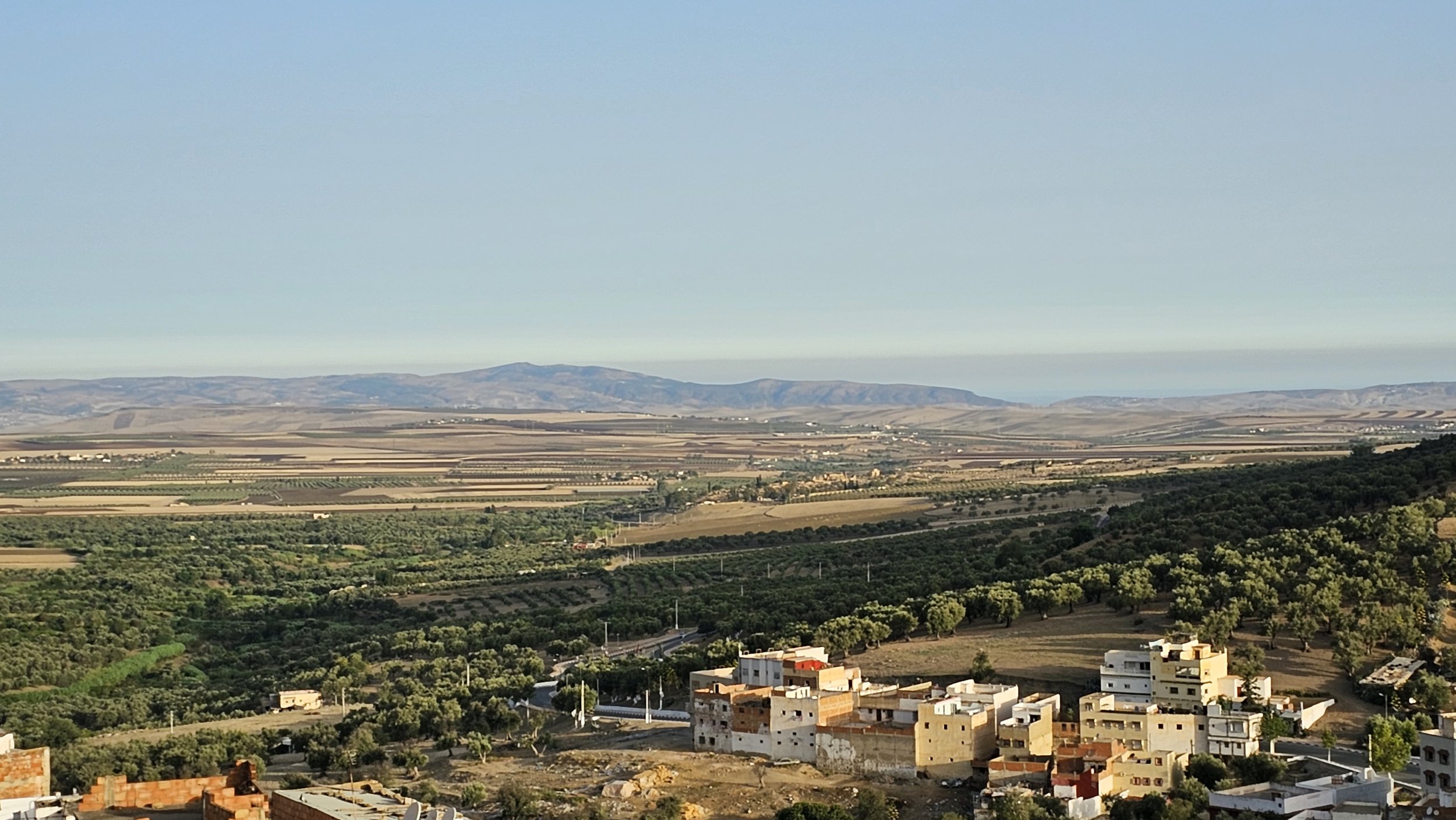








Day 3
In the morning after a hearty breakfast with the family we packed our bags, donkeys took them to the taxis and we went to Volubilis.
Volubilis is an ancient site from Roman times, established in 100 BC, it is over 2000 years old!
When Romans conquered Africa they built cities near the water. When they went inside the countryside they planted olives and established farming. Volubilis was a Roman city where archeological excavations continue to today. It has been declared as the UNESCO World Heritage site! Who would have thought we would come across that in Africa?
With only one third uncovered and excavated there is a lot more work underway and the experts expect to find colosseum, hippodrome and other well known aspects of the Roman cities.
So far, it has taken archeologists 50 years to excavate what we have seen today!
This is what they know today:
Every house had a kitchen, cca 25000 people lived here, Romans left at 4th century due to draught and poor people moved in. It was damaged during Lisbon EQ, military outpost became a city and a big trading center, using river to transport to the Mediterranean Sea with olives exported to Rome.
A few fun facts:
The infinity knot known in the Western world as the love knot that no one can undo, but for the Alexander the Great who cut it through, references to the expression of “ tying a knot “ when people get married.
Aqua duct work was higher than the land level, they used led ( mercury) to clean the water which poisoned many and caused mental illness.
Mad hatters - people who made hats during Victorian times got mad due to mercury used in creating hats.
Dolphins bring good luck and fertility.
Swastika’s origin is Indian, it represents good luck and it’s in the opposite direction to the Nazi one.
Public toilets had marble lids and Romans used slaves to make them warm. People had to pay to use toilets to clean it so it didn’t stink. English expression “spend a penny” originates from these old days.
This was a volcanic place, there were hot springs everywhere and the word “spa” originates from “salute per aqua” - water for health.
Corridor means a city center/ (heart of the city), word Cardiology comes from it - heart is the center of the body.
Forum was a huge open market area - word phobia of open place originates from this word.
We continued our ride to a beautiful city of Meknes. The city is made of two sections
Medina( Arabic term for city) known today as old city walls with maze of narrow streets and a new city developed in the 20th century under French protectorate.
Meknes originates from the 10th century, it was created by Berber / Amazigh tribe and it was a capital city of Morocco.
Squared minarets are visible everywhere and they differ in Morocco compared to other Islamic countries where minarets are round shaped.
1mil people live here, and 60% of Moroccan population live in urban zones today.
The Ministry of religious affairs funds the building mosques supported by people’s donations.
We visited a few tourists points:
Gate - Beb Alhamiz, know is Thursday Gate
Each Thursday there was a market day - weekly market was important for local people. It was considered a commercial and social event to share the news.
This area was under lots of pressure from different powers throughout centuries. On the West it was French, Spain, Portugal mighty powers, in the East side the powerful Ottoman Empire. Moulay Ismail became a well known King who fought hard to push them all away from Morocco. The current Morocco King is the descendant of the King Moulay Ismail, and Morocco is the Constitutional monarchy today.
Jews quarter - Morocco is a popular spiritual destination for Jews” Mellah”
The Jews influence is felt in every regard, but unfortunately from 10% Jews at the end of the 19th century todays presence is under 1%, majority left to Argentina and Chile during the early years of the 20th century.
Dinner stories x 3
We went to a dinner together to a traditional restaurant and three interesting things happened:
1) In our Intrepid group of travelers we have a lovely young couple from USA, Jessica and RJ. We have been travelling together for 3 days, and at the dinner Jessica approached us wanting to share something with us.
We had no clue what she was going to say and she went-" I would like to tell you something and I hope you will be OK." I looked at her, had no clue what she'd say and said - yes please, tell us. She then shared that her grandparents on her father's side are from Serbia & Macedonia who came to the USA in the 1970-ties, and she hoped we would be OK knowing that she has Serbian roots since we are from Croatia, living in NZ! Of course we are OK with that!
Jessica was born in USA in the 1990-ties, she grew up there alongside her grandparents, but her Mum (American) was too scared to openly talk about her roots, she never learnt the language, simply put, her Mum was too fearful during these terrible times. Later on in her adult life Jessica went to Serbia twice with her grandparents, her Dad never went back and she is the only one in the family who is interested in learning more about the Balkans, traditions, food, rituals, music etc. At her wedding two years ago she decided to have some aspects of a traditional Serbian wedding rituals, so so cool!
Here you go, more than 30 years after the war she met two of us on this tour and it took her 3 days to get confidence and courage to approach us since we were from Croatia! I find the story to be a beautiful and sad at the same time, all these years later and people still feel apprehensive. We have exchanged our details and we hope to stay in touch and meet them again somewhere in the former Yugoslavia, NZ or States!
2) We have met two young NZ girls living in Australia. They have been banging their heads for three days trying to figure out how old we are. They didn’t believe we had adult children as apparently we look way too young for that. At the dinner we reveled our age, to their disbelief! They ended up writing food recipes and learning about our nutritional habits and the magic of the good olive oil! So entertaining and fun!
3) The dinner finished with each of having to dance with the owner as we were paying the bills - watch the video to laugh at our expense!
Photo Album Day 3
Volubilis

















Meknes






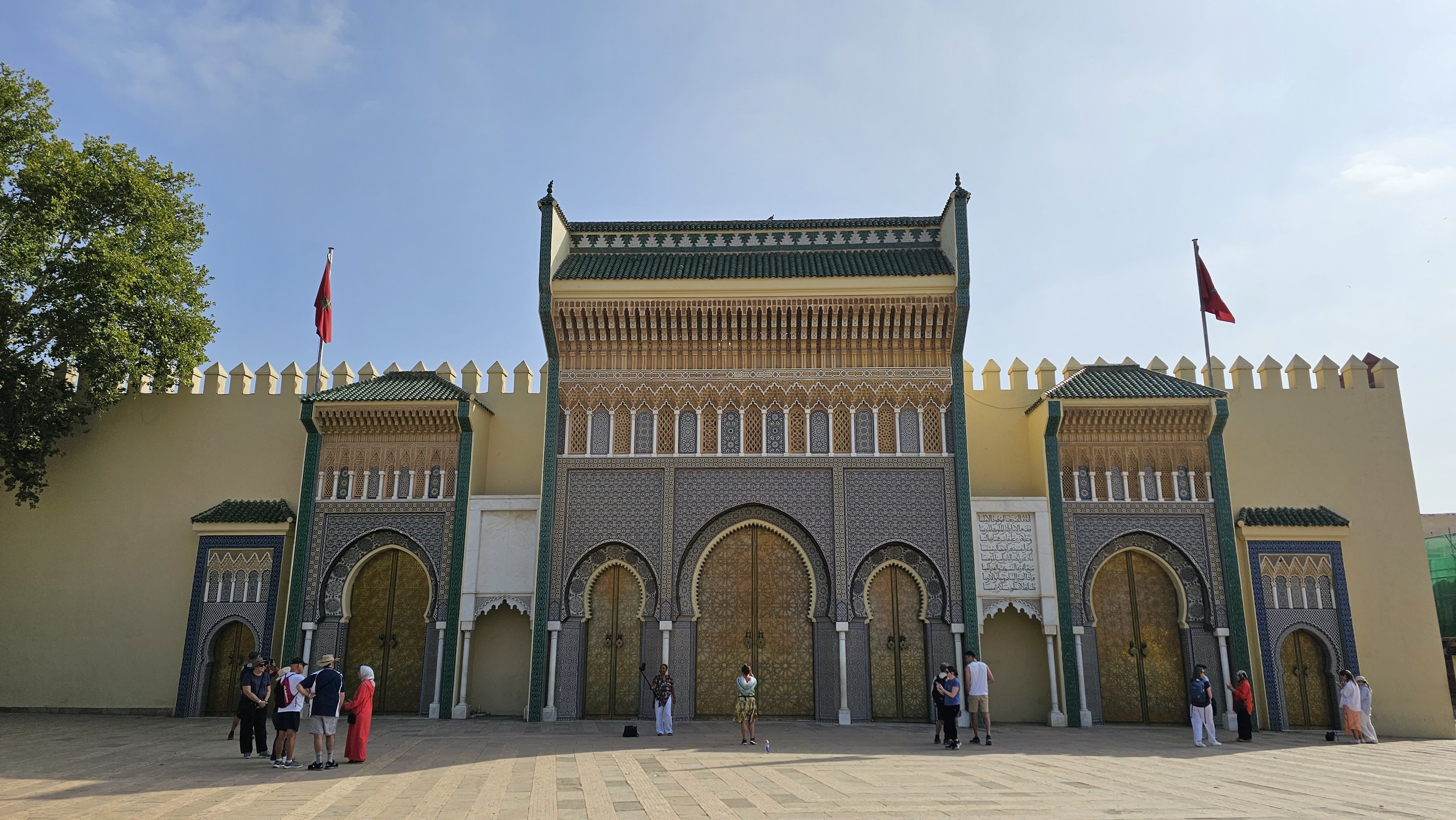


Day 4 - Fes
Medieval city from 14 century with the biggest royal palace in the whole of Morocco.
Old city Medina dates to the 8th century, and the New city was built under the French during colonial times, a common theme through Morocco.
I really really struggled in Fes. I got confronted with inequality and poverty, my tummy got upset and I didn’t eat anything the whole day. I was quiet, felt unwell, uncomfortable and sad.
These people have it so hard, it should not be like this. Our visit to a tannery brought it to life and I have to share it here to make you all aware of what goes on.
A tannery is a place where the animal skins are processed using pigeon waste to soften the skin before it gets treated and used for leather garments, bags, jackets, wallets. People work in open under direct sun and high temperatures with smell I can’t describe. Working conditions are terrible and they get poorly paid to make leather handbags that cost fortune in the Western World and a middle men make all the money. So unfair, it made me sick!
A few interesting facts:
Merhaba means welcome, and people try hard to make you feel welcomed.
Buying anything required bargaining and although we knew that’s what happens, it troubled me. You ask for a price, they say 120 Dirmahs, you say that’s too expensive, they drop to 100, the moment you look away as I am unsure, let me think, the next question is - how much can you pay, we need the money.
We bought a few souvenirs but I simply couldn’t bargain with them, my tummy got upset each time. Maybe I am overly sensitive and naïve but I didn’t like it.
Jews dominated in salt trading for marble in the 14th century. It was a golden time.
Seville bitter oranges are even today used to clean brass doors and olive oil to clean silver.
A star means prosperity and richness, shades of blue are local colours and green is the Islam colour.
The city is dominated by the España Moorish architecture.
Back in a day woman could go out twice in her life - to get married or when she passed away. That changed in 1912 , under French influence / protectorate - not that long ago when you think about it!
Despite this approach to women, the Bride’s Mum decides if gifts are good enough, if not she can stop the wedding. Powerful!
Henna is believed to come from paradise, it’s an antiseptic and is used in Hamman.
Andalusian part of the city was built by people from Granada who were expelled, 8000 families moved to Fes.
Caravan Saray is the city part established by those who were forced to leave Tunisia, 2000 families moved to Fes.
There are three parts to Fes:
Intellectual where the first university teaching Arabic language in the world was built by a lady
Spiritual with 300 mosques
Capital of artisan - handcrafts and pottery
Medina has 10,000 streets, it is the largest and the oldest Medina in Morocco.
3m people live in Fes today.
Pottery is impressive! I wish I could buy lots, but no luggage space whatsoever!
To memorise the holy book takes anywhere between 9-13 years of practicing!
Agava thread is used to make clothes and I have got myself a beautiful blue agave silk scarf, so so nice!
The next day we jumped on a public bus and arrived to the most beautiful blue city called Chefchaouen!
Photo Album Day 4
Fes



























Day 5 & 6
I love Chefchaouen, these blue buildings mixed with white lime walls and original terracotta buildings are stunning!
Love it, love it, love it! So, so, so pretty!
On arrival we settled in the most beautiful hotel designed in a true Arabic style. Our room was so pretty 🤩, Nebojsa felt like a sultan!
Went on a Medina tour and learnt a few things:
Jews quarter was established by the Jews who escaped from Spain, but then moved to Tangier, Argentina and to Chile in the end of the 19th century, cca 10% of population back then were Jews, there are almost none today.
Zoia is a small mosque with no minaret.
In the 16th century a woman ruled this region for 30 years. She is known as The Nobel Lady or Pirates Queen, depends whose history books you read: if it’s Moroccan she is The Nobel Lady who led resistance against Portuguese invasion for 30 years, if it’s Portuguese she is the Pirates Queen who fought and killed many pirates, ie a bad lady!
Experiencing a 45 degrees and high humidity it sounded absolutely impossible to learn that within a 20 mins drive in winter time there is heaps of snow. Our hotel had heaters in each room and in the city stalls you can buy summery dresses and winter coats, gloves, woolen socks! Hard to believe but true! During a winter there are big temperature differences from minus 5 to plus 29 in one day!!!
As the city was established in 1490 by those who escaped Spain its built in the Andalusian style. Initially the houses were built by natural materials, clay and water then they added “nila” ( indigo colour from Pakistan ) and lime to make them blue and white.
Firstly narrow dead end areas were painted blue to indicate it was end of the road. Then they started painting blue areas around windows and doors and a meter high walls. There are so many shades of blue, deep indigo blue with oranges provide the most beautiful contrast I’ve ever seen. I have taken so many photos, will need to buy extra cloud storage space and we are only a month into our travels!
Hats with pom-poms are typical here. The size and colours of pom-poms and women’s aprons tell what tribe they are from and how they wrap apron tells if they are married or not. Love these little quirky traditional facts!
We did an early morning hike and it was great. The mountains surrounding this small city are so high and steep, Nebojsa said it felt we were climbing Kozjak back in Croatia, not knowing that this mountain range belong to European Alps and its separated by the sea. Who would have ever thought that could be possible?! This mountain range is the National Park with over 1300 endemic plants including the black pine tree that only grows in Morocco. There are so many caves and mountain water springs, despite draughts they have never had water shortage issues.
Interestingly, this area of Morocco was also conquered by Vikings so there are many people with ginger hair, pale skin and blue eyes.
They are famous for their Mediterranean diet that’s recently been recognised by UNESCO. I didn’t even know there is such a thing as a diet that is UNESCO recognised. They eat a lot of veggies, fruits, nuts, fish and olive oil and they grow grapes.
Cannabis is the main plant that’s exported and people who drive flash cars are usually involved in its production/ distribution/export. It’s legal to grow it here, and as we hiked we could see cannabis plantations.
In the morning we got picked up by a private bus and drove to Tangier.
Photo Album Day 5 & 6
Chefchaouen












































Day 7
Tangier is Moroccan Hollywood!
I could not believe the difference and contrasts between these cities, it’s like a different planet, unbelievable!
Tangier is a typical Mediterranean city that could be anywhere in the Mediterranean. It is a place where the Mediterranean Sea and the Atlantic Ocean meet. It’s the opposite side of Gibraltar.
A wealthy city where Moroccan King has done lots of investment, such as cars manufacturing to slow down the brain drain. He has also made it very easy for other European businesses to open up here, like Germans, Belgium, French etc, and it is a ferry ride or a plane ride so close to Spain!
We haven’t seen as many top range new cars on the roads in a long time. Registration plates from different European countries.
We stopped by the supermarket to buy food for a picnic lunch, the size and varieties of the food in the supermarket blew us away. Think of it as Kmart and Countdown combined and doubled! You would never think you were in Morocco we visited so far. So so different and it felt and looked like any other luxuries Mediterranean city.
Picnic in the park with amazing sea views felt as we were in Croatia, pine trees smell, nice temperature around 28 degrees after 43 in Chefchaouen felt great!
The first USA ambassador brought eucalyptus trees from Australia here to enjoy the scenery and they have now spread everywhere. So interesting to see them around the city.
Most of the beautiful houses are actually palaces that belong to different kings and presidents around the globe. This is a Monaco of Morocco!
We went to the beach for a swim and we swam in the Atlantic Ocean for the very first time ever! So refreshing and enjoyable with camels walking alongside us, a spectacular view and amazing experience.
We listened to their traditional music and uncovered this great artist Ahmed Alshaiba- a Moroccan performer of cover songs in Arabic tone, google him , his music is amazing 🤩 !
At the end of a great day we went to our bus driver’s sister home for a home made dinner and were treated as royalties. So much beautiful food presented on silver trays, and big serving dishes. As the food was served the hosts left the dining area, it felt strange but that’s their way of doing things we had to respect.
By 11.45pm we were on the overnight train to Marrakech! Another crazy experience where group got divided into girls versus boys as there is no mixing in the sleeping cabins! I slept better than I expected but couldn’t wait to reach the hotel in the morning to have a long cold shower!
Photo Album Day 7
Tangier










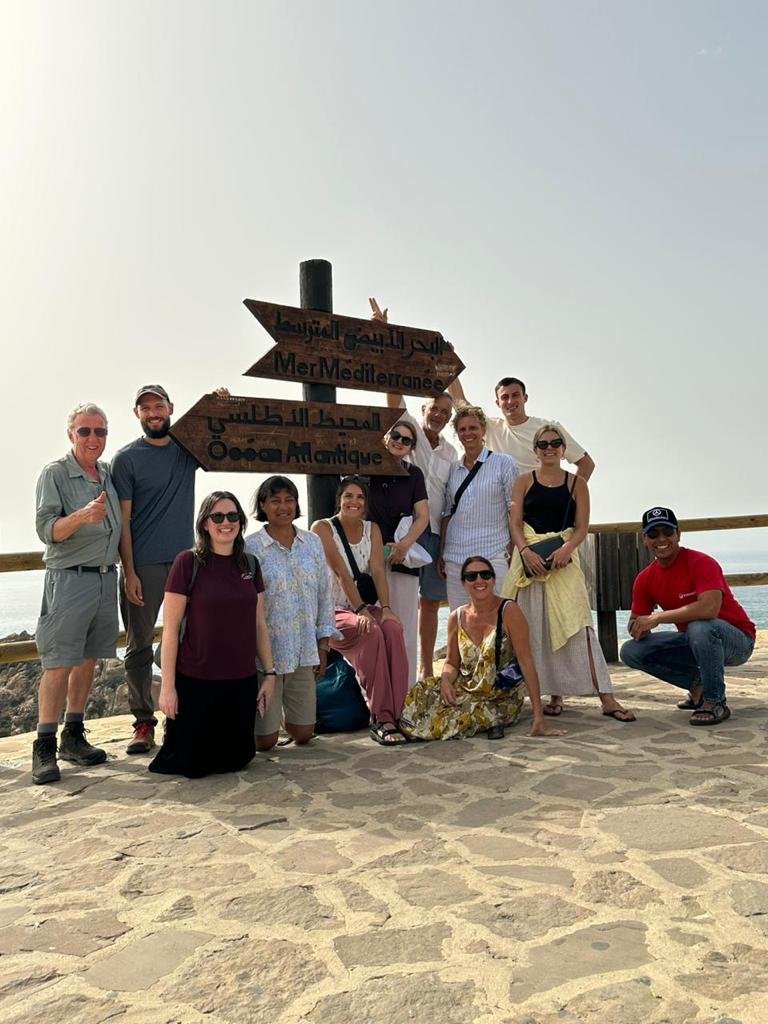



Day 8 & 9
We took it easy today! Nebojsa went to Hammam for a nice scrub and massage, I relaxed in the hotel and we went to wonder around the city on our own. We had a lovely dinner all together and said goodbyes. Some people continue with us, others have left Morocco.
It was our last day with the current group and our great tour guide Hisham and tomorrow evening we join the new group of travel buddies and continue to travel to a different part of Morocco!
Before we depart from Marrakech let me share a few things:
Also known as the Pearl of the South or the Red City, it is the gateway to the delights, dreams and colors of Arab-Berber-Muslim culture. Marrakech, sits proudly facing the largest desert in the world, the Sahara.
First capital of the Kingdom of Morocco, Marrakech is today one of the most visited cities in the country. Between tradition and modernity, it has succeeded in skillfully blending its thousand-year-old history with the cosmopolitan and trendy atmosphere of its new city. If it is well known for the maze of its medina classified as a UNESCO heritage site, it has many other treasures to discover such as monuments of Hispano-Moorish architecture or its green gardens.
We visited a few:
Medina - all roads lead to Medina! You can’t come to any of the Moroccan cities and not wonder the Medina narrow streets, colourful shops that sell everything and anything, with everyone inviting you to come in. Bargaining continues, and with a bit of practice I am feeling a bit better. It’s usually half the price to begin with and then goes up by cca 25%, you do the math’s but that’s a kind of a rule unless the prices are visible.
Taxi ride cost must be agreed before you jump in, there is no meter reader or anything like that. And you bargain again!
Colours of red are everywhere, buildings, carpets, cushions, if Chefchaouen was a blue city, Marrakech is a red city!
I love their colours, brightness and happiness, they try hard to make you feel welcomed, and are grateful for the visit and want us to tell everyone how great it is to be in their Morocco.
We attended a permanent show of the Jemaâ El-Fna square.
This was on Wednesday evening after a group dinner! What a crazy chaos!!!
I don’t know how to describe it but think of it as a big square with thousands of people walking, singing, performing rituals, playing with cobra snakes, monkeys, selling souvenirs, yummy juices (loved them), Tshirts and clothes and who knows what else! Never seen anything like this, and it happens each night, work day or a weekend! We left the square at 11pm and the show was still going on!
In the morning we left a bag of our unnecessary stuff in the hotel, and went on the second part of our Moroccan Tour exploring the nature, mountains and desserts, and the clock starts ticking again.
Photo Album Day 8 & 9
Marrakech










































